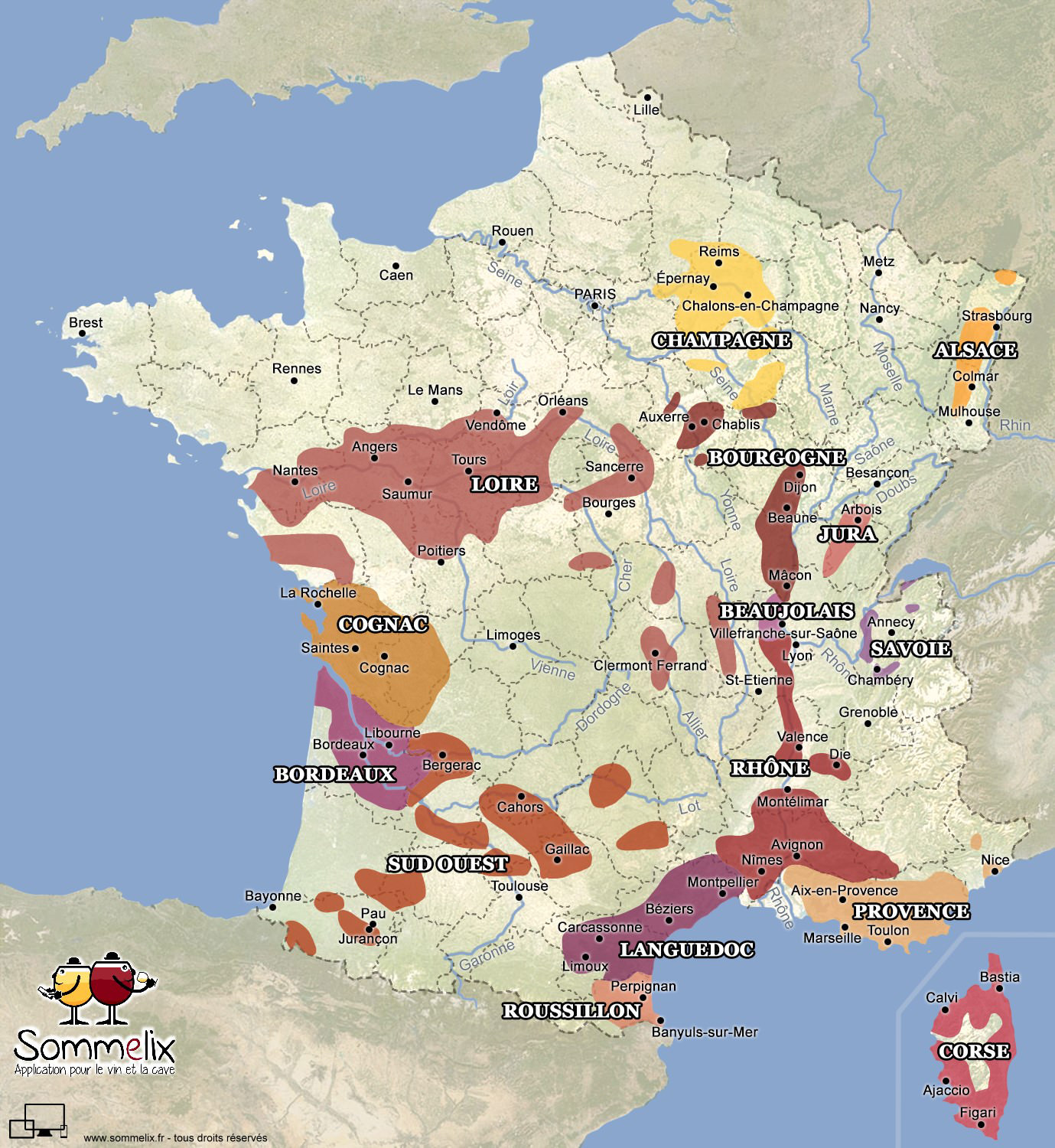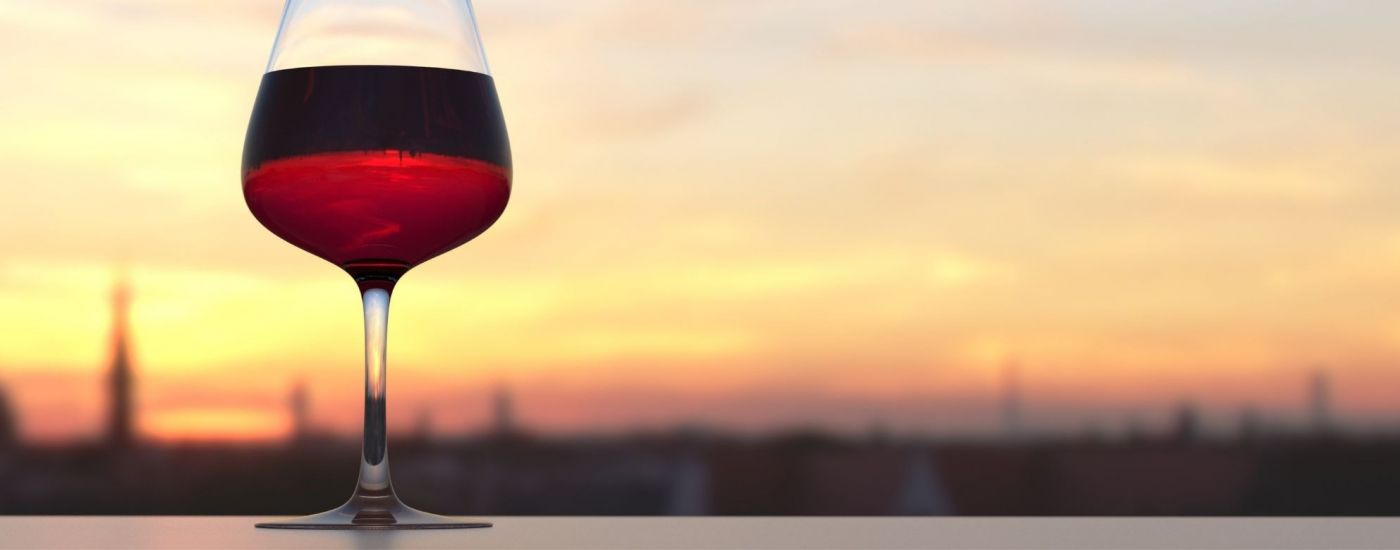We all know that gastronomy is at the heart of the French art of living and contributes greatly to its romantic and poetic image; strolling through the narrow streets and stopping for a glass of wine on a terrace, strolling along the seafront and enjoying a good Breton crêpe or gathering with the family around a good French dish. For the French, eating represents pleasure, warmth and sharing, but what would French gastronomy be without its delicious wines and its many unmissable cheeses? Let's go on a French aperitif tour, with a glass of wine and a good cheese platter!
"In France, wine is the best friend of gastronomy", it colours the typical dishes and awakens the taste buds. The vineyards are everywhere, in more than 66 departments, but the biggest wine producers are the Bordeaux region, Burgundy, Alsace, the Rhône and Loire rivers and the Mediterranean coast. Even in the most urbanised areas, wine production exists, for example on the heights of the Montmartre hill where some vines dominate the capital. With 750,000 hectares, France represents 11% of the world's wine production, so it is an important activity in our country and our agriculture. For many French people wine is a kind of passion, but what are the favourite wines of the French?
Although wine is often the unanimous choice in France, there are many differences in the way it is consumed. Indeed, red, white and rosé wines do not have the same type of consumers, nor the same frequency of consumption. Red wine is the favourite, drunk by 72% of French people, while white wine is drunk by only 25% and rosé by 3%. Red wine therefore comes out on top of the list, but it also has its own variables: 85% of men say they prefer red wine, while only 59% of women do. These differences in taste can be explained by several social and economic criteria such as age, sex, profession or even place of residence. As you can see, red wine is the favourite of most French people and Bordeaux wines are the favourites from 2016 to 2018.
In Occitania, wine has a very important place in the culture, agriculture and economy of the region. Indeed, it is the world's largest vineyard of protected designation wines. The vineyards of the South West extend over 500 km2 around Toulouse, in the former Midi-Pyrénées region. The best known appellations are Cahors, Gaillac, Madiran and Saint-Mont. The region is best known for its red wines, made from Abouriou, Cabernet Franc, and Malbec grapes.
The Languedoc-Roussillon wines cover 2260 km2 along the Mediterranean coast between Collioure and Nîmes, passing through Carcassonne and Montpellier. The best known appellations are Corbières, Pic-Saint-Loup and Faugère. This vineyard is as well known for its red wines based on cabernet-sauvignon, carignan, cinsault, merlot, mourvèdre, grenache and syrah, as for its white wines vinified from the grape varieties of the Rhone coast (marsanne, roussanne, viognier) but also from more global varieties (chardonnay, sauvignon). Without forgetting its numerous rosés.
While the vineyards of the south-west are subject to the oceanic influence and the famous autan wind which protects them from mildew, those of Languedoc-Roussillon are more subject to the Mediterranean climatic influence.
Map of the French wines
The grape varieties and these climatic influences explain the organoleptic differences between the wines of these two "sub-regions". To better understand, here is the map of France's wines!

For those who know nothing about wine, no problem, there are several rather simple techniques to learn how to recognize a good wine. Oenology is a specialist and technical field, but for wine lovers who simply want to enjoy a good glass, it is possible too!
First, you need to observe the wine, its colours, reflections and shades. Then you can smell it, to try to detect the aromas and acidity it gives off.
After these two stages of observation comes the moment of tasting, to do this you must take a small sip of wine in your mouth, inhale air through your mouth and exhale through your nose to let the aromas circulate. You can then swallow or spit out your sip.
Once the sensations have reached you, you can gently stir your glass to mix the particles and release the maximum amount of aroma and repeat the tasting process. Then trust your instincts! Here are some videos to help you apply this technique. https://youtu.be/zPFhwbEuCOA
Now that you know all about wine and tasting techniques, we'll let you experiment and tell us which wine you like best. But many French people will tell you that there is nothing like a good cheese board to accompany a glass of wine, whether it is red or white.
So check out our article on the cheeses of France!

